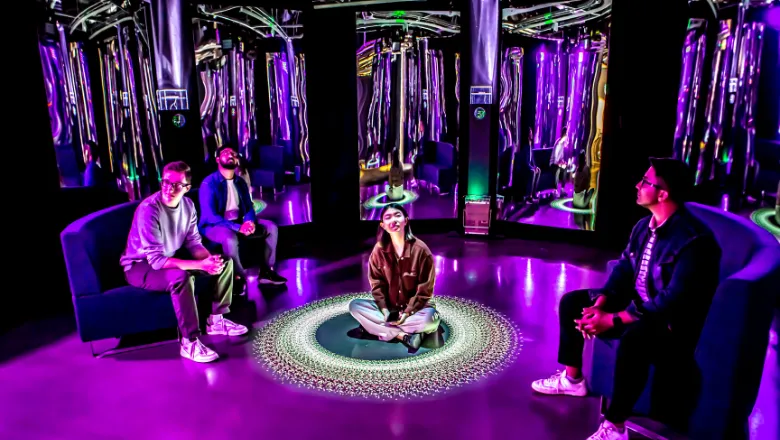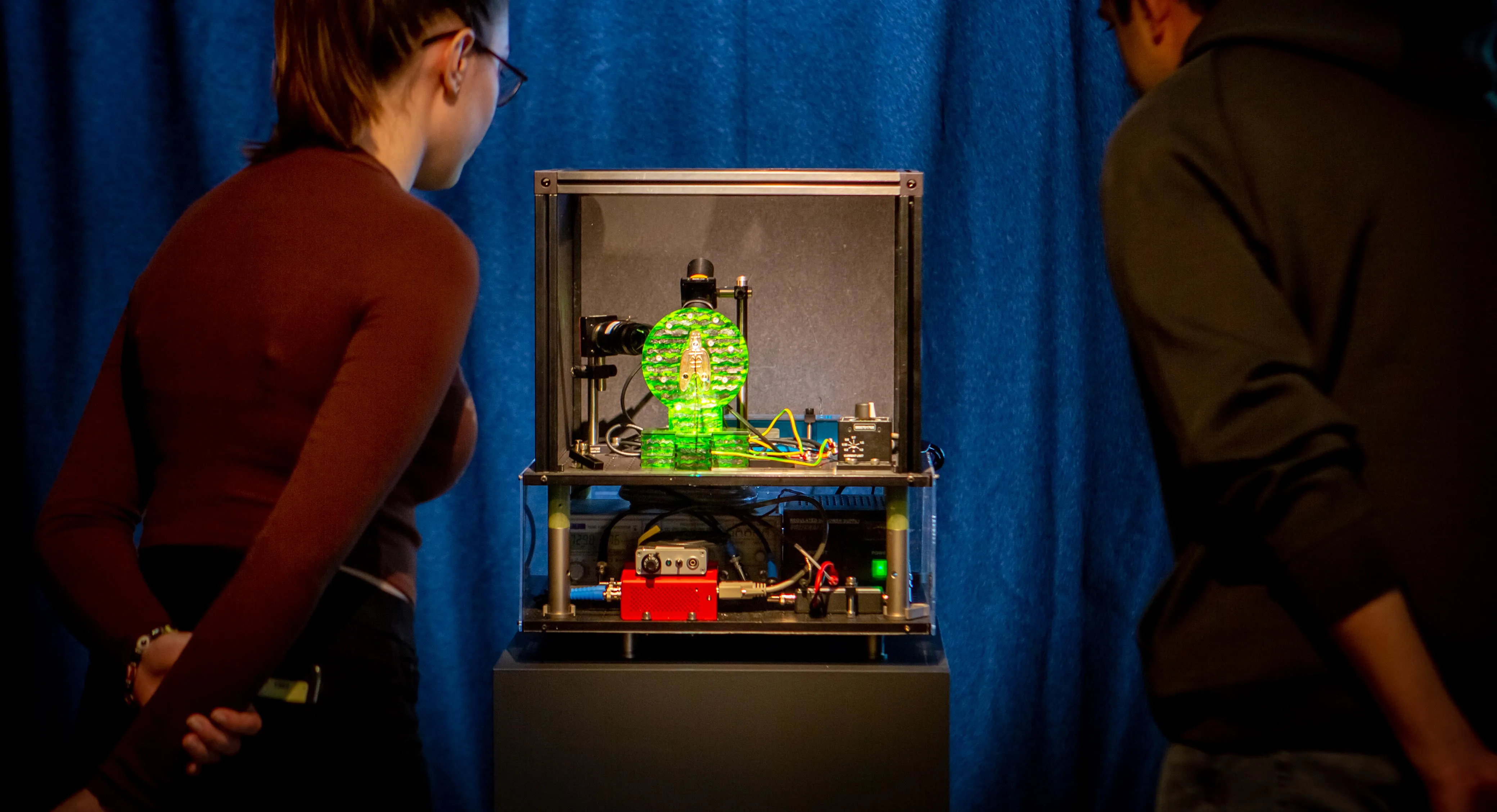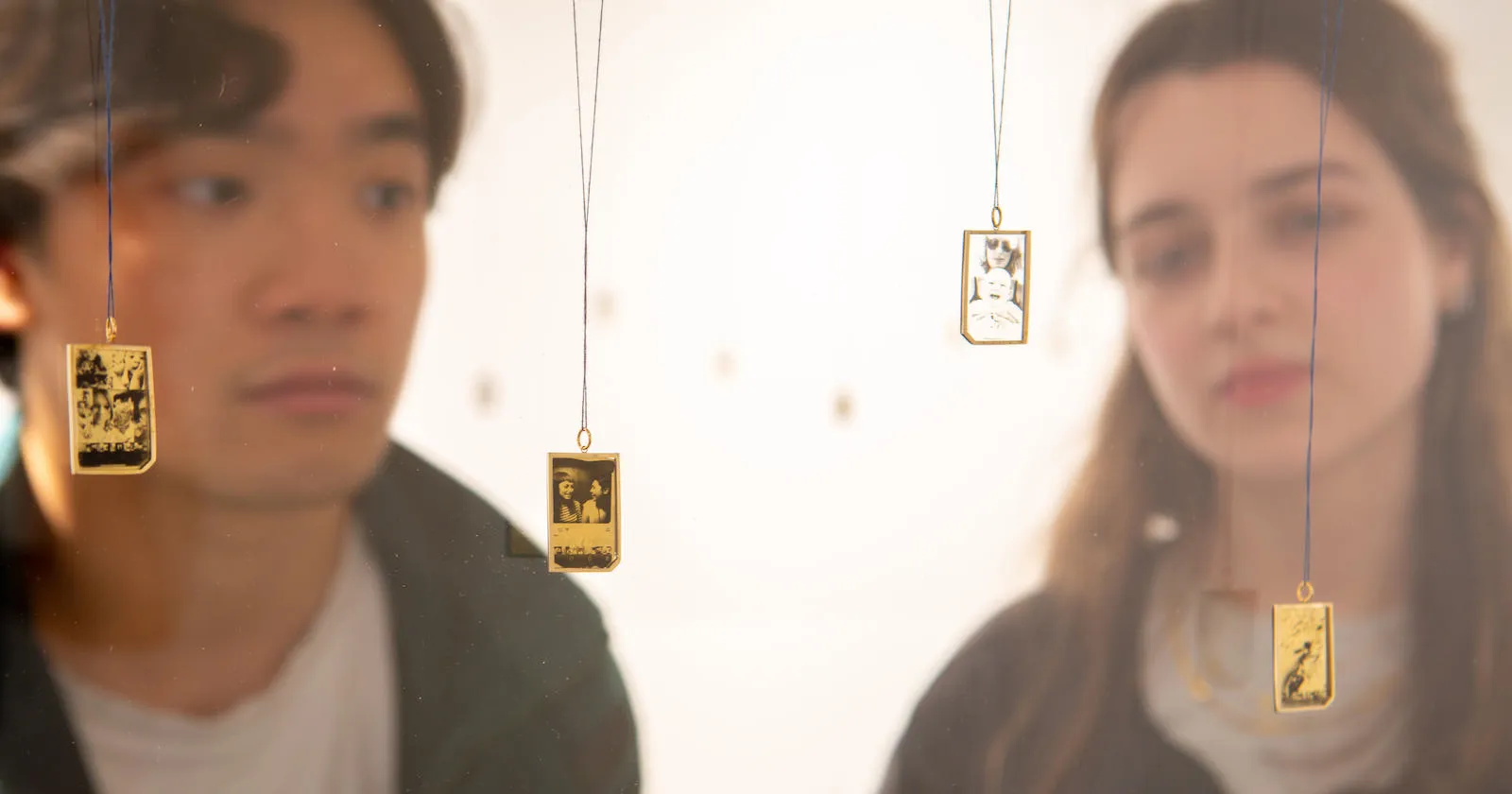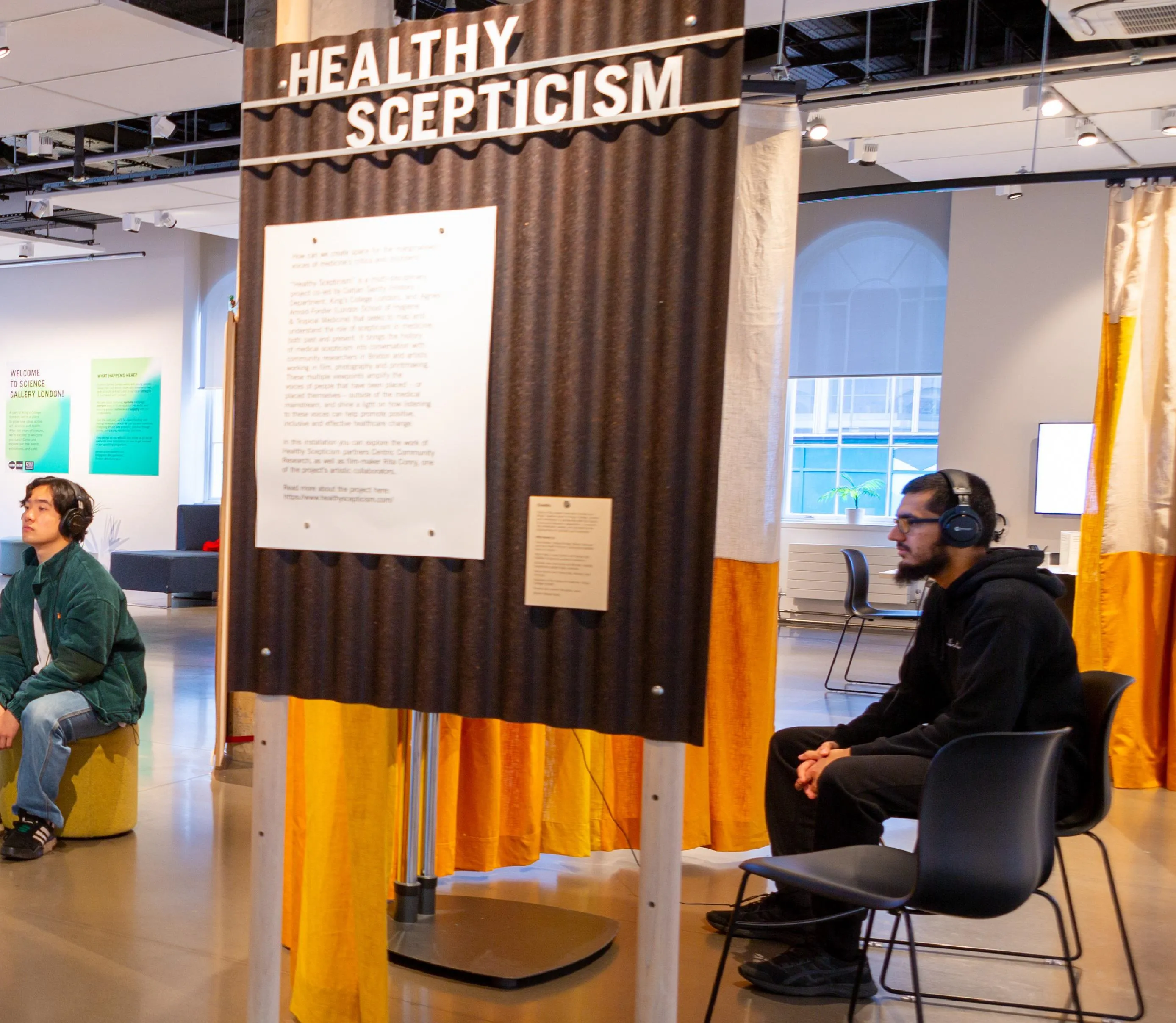New exhibition changes the ways we think about our invisible connections - to the cosmos, to nanoparticles, and to each other.

Testing Ground, Science Gallery London's latest exhibition, has opened its doors to students, staff and the general public.
The free exhibition features collaborative projects between King's researchers and creative practitioners that explore how conversations can change the ways we think about and engage with the world around us.
Speaking about the purpose of Science Gallery London, the Director Siddharth Khajuria explained, "Our programme emerges through collaborations between King's researchers, students, local communities, and artists and creative practitioners. In each of these groups are thousands of people whose research, activism, creativity, lived experience, organising, and much else, are shaping, and being shaped by, increasingly urgent social questions: about our climate, our health, how we live with technology, and our sense of individual and collective identities."
Our programme emerges through collaborations... shaped by increasingly urgent social questions: about our climate, our health, how we live with technology, and our sense of individual and collective identities. – Siddharth Khajuria, Director Science Gallery London, King's College London
"The gallery's a place where some of those people – who might otherwise be strangers – can meet, and collaborate, and co-create research and cultural work. With Testing Ground, I hope you begin to see what some of this looks like in practice", Khajuria added.
Testing Ground consists of five projects that explore our invisible connections – to the cosmos, to nanoparticles, and to each other.
Particle Shrine
Experimental particle physicist Dr Teppei Katori, from King's Department of Physics, studies cosmic rays - high energy particles that shoot through space, colliding with molecules in the atmosphere and showering the Earth with other tiny particles such as muons and neutrinos.
In Particle Shrine, Katori has collaborated with musician and composer Christo Squier and creative technologist Chris Ball to create a magical immersive installation that takes live data from five cosmic ray detectors installed at Science Gallery London and from the Super-Kamiokande neutrino observatory in Japan to transform these invisible particles into an audio-visual experience like no other.
Seeing the Unthinkable
The quantum research of Dr James Millen, from Department of Physics, is blended with artist Steve Claydon's exploration of the entanglements of scientific and cultural value. Their installation features diamond nanoparticles visibly levitating in a 'trap' produced by an electrical field. The housing for the experiment that Steve has created in collaboration with artist Harriet Vine emphasises ideas of artistic, cultural and historical 'value'.
The installation invites you to consider how the 'spectacle' of science contains meanings and significance beyond the scientific. Using electric fields to suspend objects is "Ion Trapping" - the technology at the heart of mass spectrometers, which are used for everything from carbon dating to analysing Covid PCR tests.

The SIM Project
This collaboration between Dr Zeena Feldman, from Department of Digital Humanities, and artist/anthropologist Liz Hingley, with jewellery designer Sofie Boons and Frank Menger of the Centre for Print Research, University West England, presents the SIM card as a precious portrait of intimate relationships that connects most of the world's population.
Exploring how the SIM card shapes a sense of security, identity and community, the project disrupts the automated nature of the smartphone to create unique, wearable artworks, stamped with QR codes.

Testing, Testing
Weaving together the research on neurodiversity, autism, cognition and creativity of Professor Francesca Happé, Institute of Psychiatry, Psychology and Neuroscience, and the playful artistic practice of Peter Shenai, the piece explores the history of visual reasoning tests help us think differently about our traditional definitions of 'intelligence'.

Healthy Scepticism
A multi-disciplinary project co-led by Dr Caitjan Gainty, from King's Department of History, and Dr Agnes Arnold-Forster, London School of Hygiene & Tropical Medicine, that seeks to map and understand the role of scepticism in medicine, both past and present.
Multiple viewpoints amplify the voices of people that have been placed – or placed themselves – outside of the medical mainstream, and shine a light on how listening to these voices can help promote positive, inclusive and effective healthcare change.

Visitor information
The exhibition is free to visit, and open until 21 January 2023.






